
Rakabganj: The Heart of Agra's Local Charm
Experience the authentic charm of Rakabganj in Agra, where vibrant markets, historical sites, and local delicacies await to enchant and delight every traveler.
Rakabganj, nestled in the historic city of Agra, is a treasure trove of cultural richness and local charm. Known for its close proximity to the Taj Mahal, this neighbourhood offers tourists an authentic slice of Indian life, away from the hustle and bustle of more commercial areas. As you wander through Rakabganj, you'll be captivated by its vibrant markets, where vendors sell everything from fresh produce to handcrafted souvenirs. The streets are lined with small eateries serving mouth-watering local delicacies, offering a true taste of Agra's culinary heritage. The neighbourhood is also home to several historical sites, including the Agra Fort and the Jama Masjid, providing a deep dive into India's architectural marvels. Whether you're exploring its winding alleys or engaging with friendly locals, Rakabganj promises a unique and unforgettable experience.
Local tips in Rakabganj
- Visit early in the morning to avoid crowds and enjoy a quieter, more peaceful experience.
- Carry cash as many local vendors and eateries do not accept credit cards.
- Wear comfortable shoes as the best way to explore Rakabganj is on foot.
- Try the local street food, but make sure to choose stalls that are popular with locals for the best hygiene and taste.
- Hire a local guide to learn about the history and significance of the neighbourhood's landmarks.
Rakabganj: The Heart of Agra's Local Charm
Rakabganj, nestled in the historic city of Agra, is a treasure trove of cultural richness and local charm. Known for its close proximity to the Taj Mahal, this neighbourhood offers tourists an authentic slice of Indian life, away from the hustle and bustle of more commercial areas. As you wander through Rakabganj, you'll be captivated by its vibrant markets, where vendors sell everything from fresh produce to handcrafted souvenirs. The streets are lined with small eateries serving mouth-watering local delicacies, offering a true taste of Agra's culinary heritage. The neighbourhood is also home to several historical sites, including the Agra Fort and the Jama Masjid, providing a deep dive into India's architectural marvels. Whether you're exploring its winding alleys or engaging with friendly locals, Rakabganj promises a unique and unforgettable experience.
Iconic landmarks you can’t miss
Anguri Bagh
Experience the tranquility of Anguri Bagh, a stunning Mughal garden in Agra Fort, where lush greenery meets rich history and architectural beauty.

Amar Singh Gate
Discover the architectural brilliance and historical significance of Amar Singh Gate, a gateway to the majestic Agra Fort in India.

Red Fort of Agra
Explore the Red Fort of Agra, an architectural masterpiece and UNESCO World Heritage Site that showcases the brilliance of Mughal design and history.

Jahangir Palace
Explore Jahangir Palace, an exquisite Mughal architectural marvel in Agra, rich in history and surrounded by stunning views.

The Shish Mahal (The Glass Palace)
Explore The Shish Mahal, a stunning historical site in Agra, where Mughal grandeur meets exquisite craftsmanship in a captivating setting.

Diwan-I-Am
Experience the grandeur of Mughal architecture at Diwan-I-Am, a historical marvel in Agra, reflecting India's rich cultural heritage.

Shah Jahani Mahal
Experience the splendor of Mughal architecture at Shah Jahani Mahal, a historical gem within Agra Fort that showcases India's vibrant heritage.

Diwan-e-khas
Explore the exquisite beauty and rich history of Diwan-e-Khas, a stunning Mughal architectural masterpiece in Agra Fort.

Shahi Burj
Discover the Shahi Burj at Agra Fort, a stunning example of Mughal architecture and a serene spot for panoramic views and historical reflection.

Jahan Ara Pavilion
Experience the serene beauty and rich history of Jahan Ara Pavilion, a stunning Mughal architectural gem in Agra Fort.

Unmissable attractions to see
Taj Mahal
Discover the enchanting beauty of the Taj Mahal, a UNESCO World Heritage site and an iconic symbol of love in India.

Amar Singh Gate
Explore the majestic Amar Singh Gate, a historical landmark that opens the door to Agra Fort's rich history and stunning Mughal architecture.

Red Fort of Agra
Discover the Red Fort of Agra, a UNESCO World Heritage Site, showcasing stunning Mughal architecture and a rich historical narrative in the heart of India.
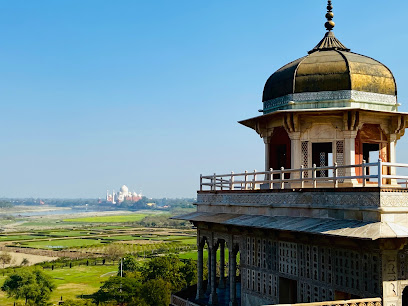
Chini Ka Rauza
Explore the enchanting Chini Ka Rauza in Agra, a historical monument showcasing exquisite Mughal architecture and a serene atmosphere.

Jahangir Palace
Explore the exquisite Jahangir Palace in Agra, a stunning blend of Mughal architecture and rich history, perfect for every traveler's itinerary.

Diwan-I-Am
Experience the grandeur of the Mughal Empire at Diwan-I-Am, a historical landmark within Agra Fort showcasing exquisite architecture and rich history.

Diwan-e-khas
Discover the elegance of Diwan-e-Khas, a historical landmark in Agra Fort that encapsulates the splendor of the Mughal Empire.
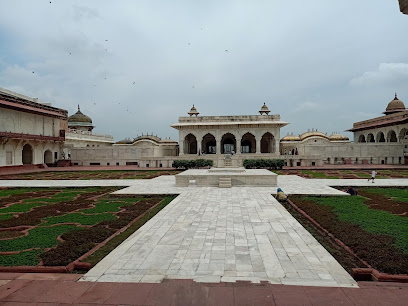
Essential places to dine
Deepee Restaurant (formerly Dasaprakash)
Experience authentic South Indian vegetarian cuisine at Deepee Restaurant in Agra - a must-visit for food enthusiasts.

Masala Darbar Restaurant ( M.D )
Experience the authentic flavors of India at Masala Darbar Restaurant in Agra - a culinary gem offering traditional dishes in a warm ambiance.

The Kesar Restaurant
Experience authentic Indian cuisine at The Kesar Restaurant in Agra – where every dish tells a story.

2nd wife (fine dining and rooftop)
Discover fine Indian dining at 2nd Wife Rooftop Restaurant in Agra—an exquisite blend of flavors and breathtaking city views.
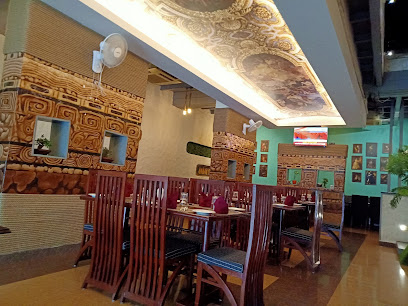
The Greens Restaurant & Herbal Cafe
Experience Agra's finest vegetarian cuisine at The Greens Restaurant & Herbal Cafe - where health meets flavor in every bite.

Shankara Vegis Restaurant
Experience authentic vegetarian cuisine at Shankara Vegis Restaurant near the Taj Mahal - where flavor meets tradition in every bite.

Novelty Restaurant
Experience the essence of Indian cuisine at Novelty Restaurant in Agra - where tradition meets flavor in every dish.
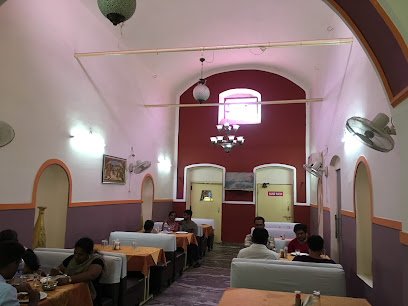
Famous Restaurant
Experience the vibrant flavors of India at Famous Restaurant in Agra - where every meal is a celebration of taste!

Galib Restaurant
Discover Agra's culinary gem at Galib Restaurant, where authentic Biryani meets warm hospitality in a vibrant setting.

Spice Kitchen- The Sizzling Multi-Cuisine Restaurant
Discover a culinary gem in Agra at Spice Kitchen - where Indian spices meet Chinese flavors in an inviting atmosphere.

Markets, malls and hidden boutiques
Ashok Cosmos Mall
Explore Ashok Cosmos Mall in Agra for a diverse shopping and dining experience in a modern setting, perfect for tourists and locals alike.

Bachoomal Sons Agra
Discover the best of Agra's fashion at Bachoomal Sons, offering exquisite bridal wear, children's clothing, and trendy accessories for all occasions.

The Casual Point
Discover stylish men's clothing at The Casual Point in Agra, where fashion meets affordability in a vibrant shopping destination.

Lifestyle Stores
Discover the ultimate shopping experience at Lifestyle Stores in Agra's Ashok Cosmos Mall, featuring fashion, beauty, and more.

Unique Handicrafts
Explore the vibrant artistry of Agra at Unique Handicrafts, where authentic Indian craftsmanship awaits every visitor.
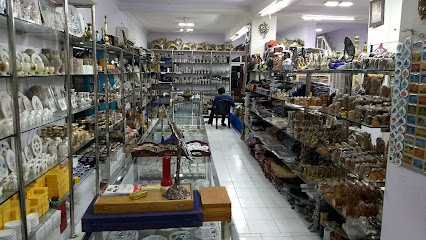
Plush Souvenirs
Explore Plush Souvenirs in Agra for unique, handcrafted gifts and plush toys that capture the spirit of India.

Subhash Emporium
Explore Subhash Emporium: A Handicraft Museum and Boutique in Agra, Showcasing Unique Local Artistry and Craftsmanship.

TRENDS
Explore TRENDS in Agra for trendy casual wear and an unforgettable shopping experience amidst local culture.

The Warehouse of Gifts & Souvenirs
Discover a world of unique gifts and authentic handicrafts at The Warehouse of Gifts & Souvenirs in Agra, a shopper's paradise near the Taj Mahal.
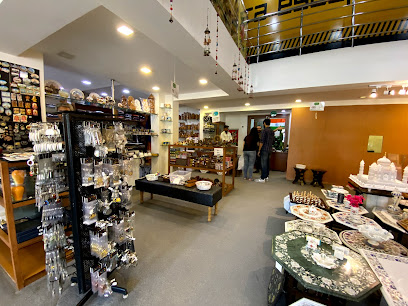
ONE TO FIVE DOLLAR SHOP, GIFT GALLERY
Unearth unique souvenirs at One to Five Dollar Shop, a gift gallery near the Taj Mahal, where affordability meets creativity.

HABOVA STORES
Experience a diverse shopping adventure at HABOVA STORES in Agra, offering everything from unique gifts to essential appliances.

Ganeshi Lall Emporium
Explore the exquisite craftsmanship at Ganeshi Lall Emporium, Agra's premier destination for unique handcrafted jewelry that reflects India's rich cultural heritage.

Bachoomal Fashions
Discover the perfect blend of tradition and modernity at Bachoomal Fashions, Agra's premier clothing store for stunning outfits.

Ramji Lal Ashok Kumar
Explore a vibrant clothing store in Agra, featuring authentic Indian fashion and unique styles to enrich your travel experience.

Bansal Handicrafts Emporium
Explore the essence of Indian craftsmanship at Bansal Handicrafts Emporium in Agra, where every souvenir tells a story.

Essential bars & hidden hideouts
The Salt Cafe
Experience a delightful fusion of cuisines at The Salt Cafe, a vibrant restaurant near the Taj Mahal, perfect for food lovers and travelers.

Molecule Agra
Experience the best of Agra's culinary scene at Molecule Agra, where great food meets exquisite ambiance and stunning views.

The Palm Burj - Best Rooftop | Best Lounge | Best Club | Best Pub | Best Restaurant in Agra
Experience Agra's vibrant nightlife at The Palm Burj, a rooftop lounge with stunning views, delicious cuisine, and a lively atmosphere.

Folks Pub & Brewery
Discover the vibrant atmosphere and exceptional craft brews at Folks Pub & Brewery in Agra, an ideal destination for food and beer lovers alike.

Downtown Cafe & Bar - Restropub ( Top Cafe in Agra)
Discover the ultimate blend of lively bar culture and cozy cafe comfort at Downtown Cafe & Bar in Agra, where every sip is a taste of local flavor.

LORD OF THE DRINKS AGRA
Experience luxury at Lord of the Drinks Agra, where exquisite drinks meet a vibrant atmosphere for an unforgettable night out.

My Bar Headquarters Agra
Discover the vibrant flavors and lively atmosphere of My Bar Headquarters in Agra, a perfect blend of grill and bar for an unforgettable experience.

Pub Zee bar and lounge
Explore the vibrant nightlife at Pub Zee Bar and Lounge, Agra's premier grill and bar destination near the Taj Mahal.

Mansion - Tapas & Club
Discover the vibrant nightlife at Mansion - Tapas & Club in Agra, where exquisite tapas meet electrifying disco beats for an unforgettable experience.

New Agra Caterers Bar & Restaurant
Experience the rich flavors of India at New Agra Caterers Bar & Restaurant, a perfect blend of grilled delicacies and vibrant atmosphere in Agra.

Beer Shop
Experience Agra's vibrant nightlife at the Beer Shop, where local brews and a lively atmosphere await every traveler.

J P Bar and Restaurant
Experience Agra's lively nightlife at J P Bar and Restaurant, where delicious food and drinks meet a vibrant atmosphere.
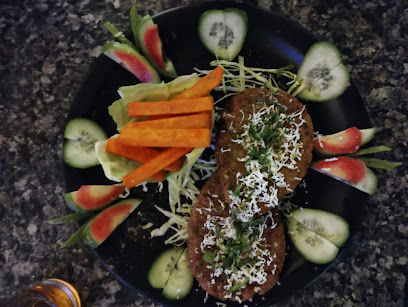
Tourist bar and restaurant
Discover Agra's lively tourist bar, offering a delightful mix of local cuisine and refreshing drinks in a vibrant atmosphere.

Dharmendra Kumar
Experience the vibrant nightlife at Dharmendra Kumar Bar in Agra, where local flavors and a lively atmosphere await you.

Local Phrases
-
- Helloनमस्ते
[namaste] - Goodbyeअलविदा
[alvida] - Yesहाँ
[haan] - Noनहीं
[nahi] - Please/You're welcomeकृपया/स्वागत है
[krupaya/swagat hai] - Thank youधन्यवाद
[dhanyavad] - Excuse me/Sorryक्षमा करें/माफ़ कीजिए
[kshama karein/maaf kijiye] - How are you?आप कैसे हैं?
[aap kaise hain?] - Fine. And you?ठीक हूँ। आप?
[theek hoon. aap?] - Do you speak English?क्या आप अंग्रेज़ी बोलते हैं?
[kya aap angrezi bolte hain?] - I don't understandमैं समझ नहीं पा रहा हूँ
[main samajh nahi pa raha hoon]
- Helloनमस्ते
-
- I'd like to see the menu, pleaseकृपया मेनू देखना चाहूँ
[krupaya menu dekhna chaahun] - I don't eat meatमैं मांस नहीं खाता
[main maans nahi khaata] - Cheers!जय हो!
[jay ho!] - I would like to pay, pleaseकृपया मैं भुगतान करना चाहूँ
[krupaya main bhugtan karna chaahun]
- I'd like to see the menu, pleaseकृपया मेनू देखना चाहूँ
-
- Help!बचाओ!
[bachao!] - Go away!चले जाओ!
[chale jao!] - Call the Police!पुलिस को बुलाओ!
[police ko bulaao!] - Call a doctor!डॉक्टर को बुलाओ!
[doctor ko bulaao!] - I'm lostमैं खो गया हूँ
[main kho gaya hoon] - I'm illमुझे बीमारी है
[mujhe bimari hai]
- Help!बचाओ!
-
- I'd like to buy...मैं खरीदना चाहूँ...
[main khareedna chaahun...] - I'm just lookingमैं बस देख रहा हूँ
[main bas dekh raha hoon] - How much is it?यह कितने का है?
[yah kitne ka hai?] - That's too expensiveयह बहुत महंगा है
[yah bahut mahnga hai] - Can you lower the price?क्या आप कीमत कम कर सकते हैं?
[kya aap keemat kam kar sakte hain?]
- I'd like to buy...मैं खरीदना चाहूँ...
-
- What time is it?अभी कितने बजे हैं?
[abhi kitne baje hain?] - It's one o'clockएक बजे हैं
[ek baje hain] - Half past (10)दस बजे के बाद
[das baje ke baad] - Morningसुबह
[subah] - Afternoonदोपहर
[dopahar] - Eveningशाम
[shaam] - Yesterdayकल
[kal] - Todayआज
[aaj] - Tomorrowकल
[kal] - 1एक
[ek] - 2दो
[do] - 3तीन
[teen] - 4चार
[chaar] - 5पाँच
[paanch] - 6छह
[chhah] - 7सात
[saat] - 8आठ
[aath] - 9नौ
[nau] - 10दस
[das]
- What time is it?अभी कितने बजे हैं?
-
- Where's a/the...?कहाँ है...
[kahaan hai...] - What's the address?पता क्या है?
[pata kya hai?] - Can you show me (on the map)?क्या आप मुझे दिखा सकते हैं (नक्शे पर)?
[kya aap mujhe dikhha sakte hain (naksha par)?] - When's the next (bus)?अगली (बस) कब है?
[agli (bas) kab hai?] - A ticket (to ....)एक टिकट (... के लिए)
[ek ticket (... ke liye)]
- Where's a/the...?कहाँ है...
History of Rakabganj
-
Rakabganj, located in Agra, has deep historical roots dating back to the Mughal Empire in the 16th century. The neighbourhood was close to the grand city of Agra, which served as the capital for several Mughal emperors. This period saw the construction of magnificent structures, including the Taj Mahal and Agra Fort, with Rakabganj being a strategic location for royal activities and trade.
-
During the First Anglo-Maratha War in the 18th century, Rakabganj witnessed significant military activity. The Siege of Agra in 1758 involved intense battles, with forces vying for control over the region. The conflict resulted in substantial changes in power dynamics within Agra and surrounding areas, influencing the socio-political landscape of Rakabganj.
-
In the 19th century, during British colonial rule, Rakabganj experienced urbanization and infrastructural changes. The British introduced new administrative systems and developed roads, which enhanced connectivity with Agra's central areas. This period also saw the establishment of educational institutions that aimed to modernize the local populace.
-
Rakabganj has historically been a cultural melting pot, reflecting the diverse communities that have inhabited the area. The neighbourhood is known for its vibrant markets, traditional crafts, and culinary diversity, influenced by Mughal heritage and local customs. This rich cultural tapestry continues to be a defining characteristic of Rakabganj.
-
In recent years, Rakabganj has seen efforts to balance modern development with the preservation of its historical heritage. Initiatives to restore old buildings and promote local crafts have been implemented, enhancing the area's appeal to tourists while maintaining its historical significance as part of Agra's rich legacy.
Rakabganj Essentials
-
Rakabganj is centrally located in Agra, making it easily accessible from various parts of the city. If you're coming from the Agra Cantt railway station, you can take a local taxi or an auto-rickshaw, which will take around 15-20 minutes. From the Taj Mahal area, Rakabganj is approximately 3 km away, and you can either walk or hire a cycle rickshaw. Local buses also connect to Rakabganj from different neighborhoods.
-
Rakabganj is best explored on foot or by bicycle, as many attractions are within walking distance. Auto-rickshaws are readily available for longer distances, and they provide a quick way to navigate the busy streets. Local buses operate throughout Agra, but may not be the most comfortable option for tourists. For a more personalized experience, consider hiring a bike or a scooter from local rental shops.
-
Rakabganj is generally safe for tourists, but it's important to remain cautious. Avoid walking alone at night, especially in poorly lit areas. Petty crime like pickpocketing can occur in crowded places such as markets and near tourist sites. Areas like the back alleys near the bus station can be less safe, particularly after dark. Always keep your belongings secure and be vigilant.
-
In case of an emergency, dial 112 for police assistance, 101 for fire services, and 102 for ambulance services. The local hospitals are equipped to handle medical emergencies, and it's advisable to have travel insurance that covers health issues. Pharmacies are available throughout Rakabganj for minor ailments; however, ensure you have the necessary prescriptions for any specific medications.
-
Fashion: Do dress modestly, especially when visiting religious sites. Avoid wearing revealing clothing. Religion: Do respect local customs and traditions. Always cover your head when entering temples. Public Transport: Do be respectful and give up your seat to elderly passengers. Don’t eat or drink on public transport. Greetings: Do greet people with a smile and a nod. A handshake is common among men. Eating & Drinking: Do try local street food but ensure it’s from a clean vendor. Don’t drink tap water; always opt for bottled water.
-
To experience Rakabganj like a local, visit the bustling markets early in the morning for fresh produce and local snacks. Engage with street vendors and try popular dishes like chaat and parathas. Attend local festivals if your visit coincides with one, as they're a great way to experience the culture. Explore lesser-known temples and parks for a peaceful retreat from the tourist crowds.
Nearby Cities to Rakabganj
-
Things To Do in Gwalior
-
Things To Do in Delhi
-
Things To Do in Ranthambore
-
Things To Do in Jaipur
-
Things To Do in Kanpur
-
Things To Do in Lucknow
-
Things To Do in Rishikesh
-
Things To Do in Pushkar
-
Things To Do in Bhopal
-
Things To Do in Shimla
-
Things To Do in Lumbini
-
Things To Do in Jabalpur
-
Things To Do in Jodhpur
-
Things To Do in Udaipur
-
Things To Do in Varanasi








